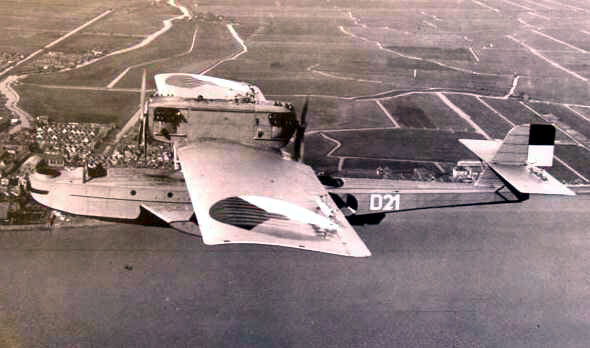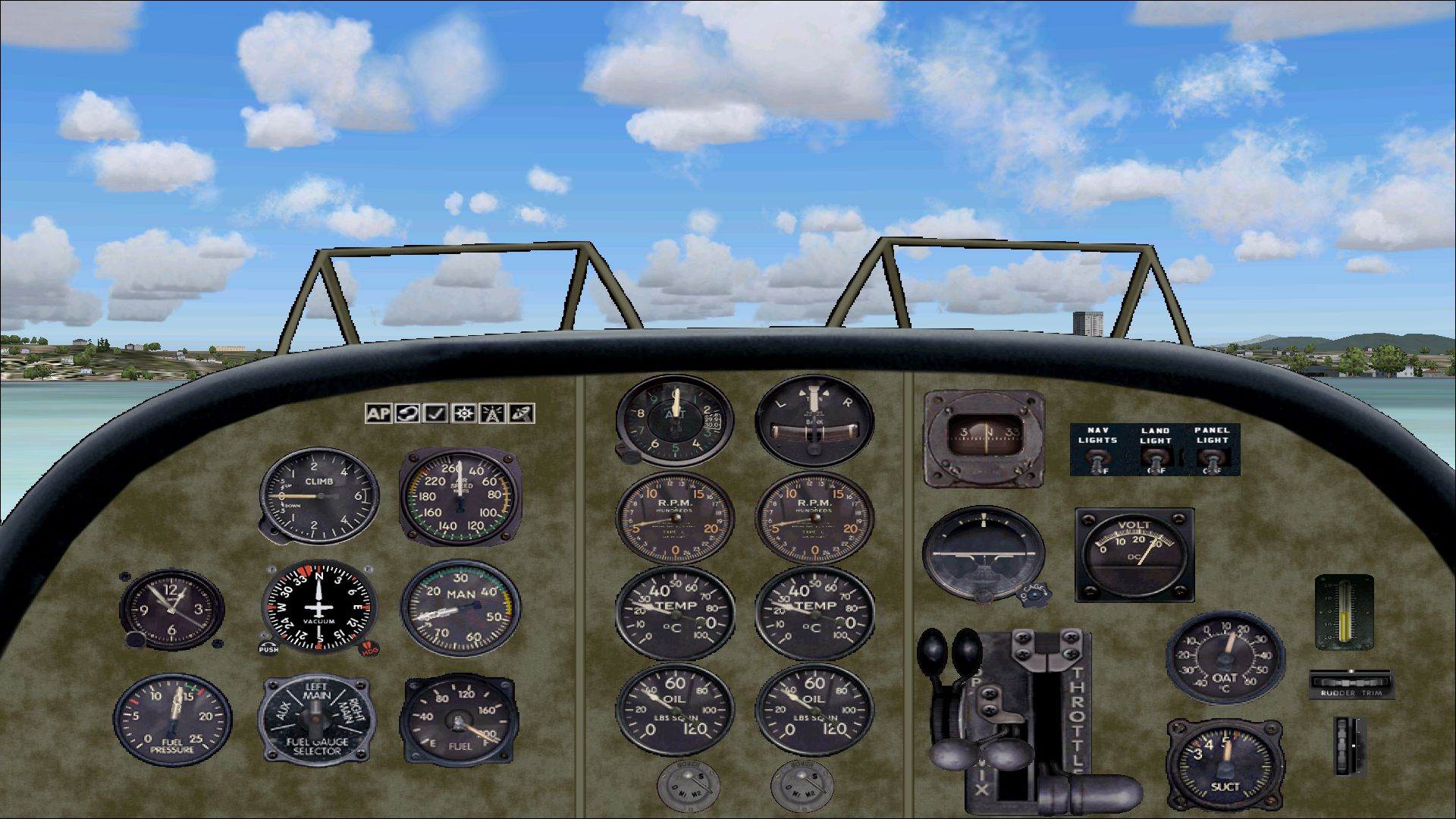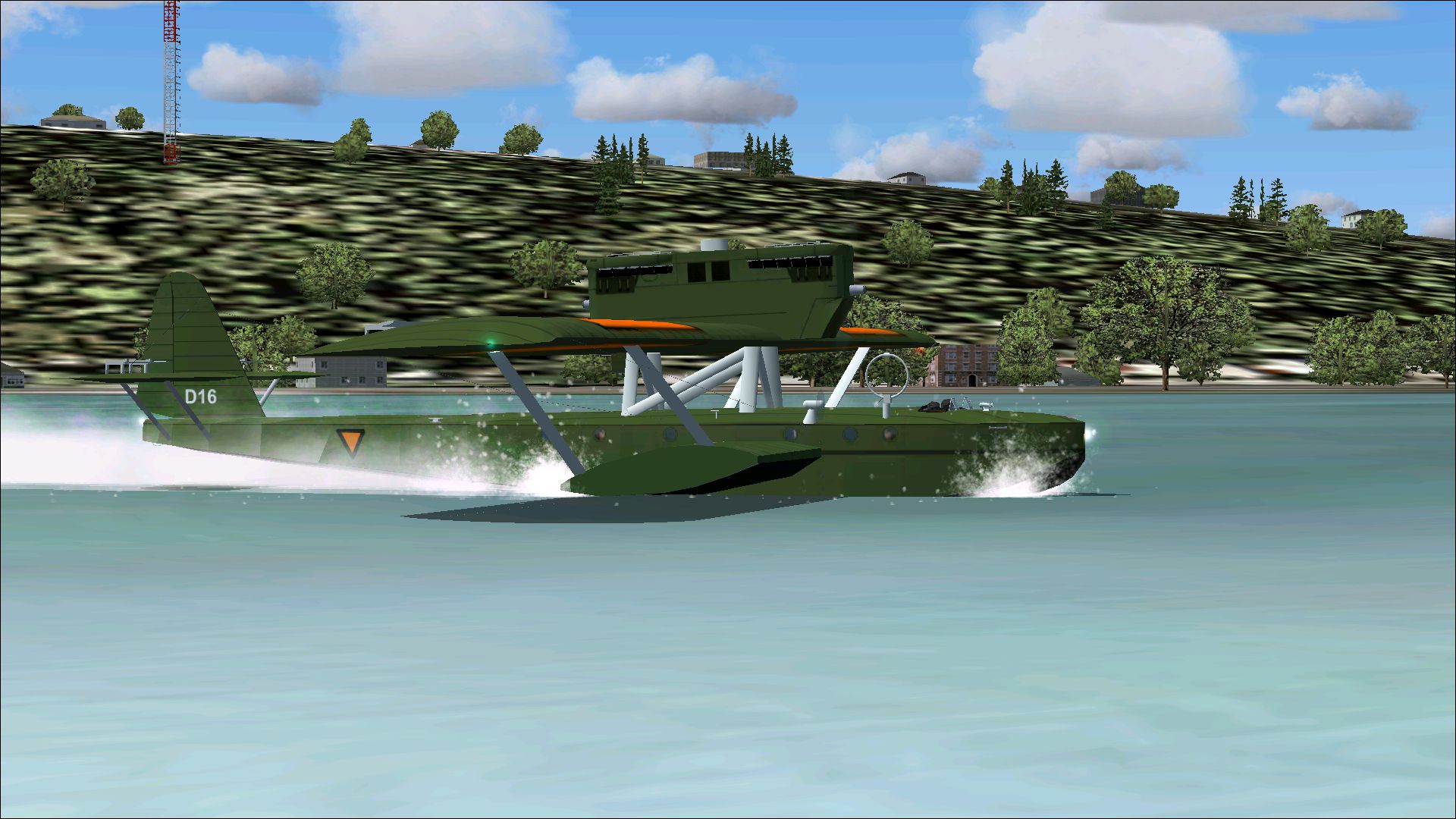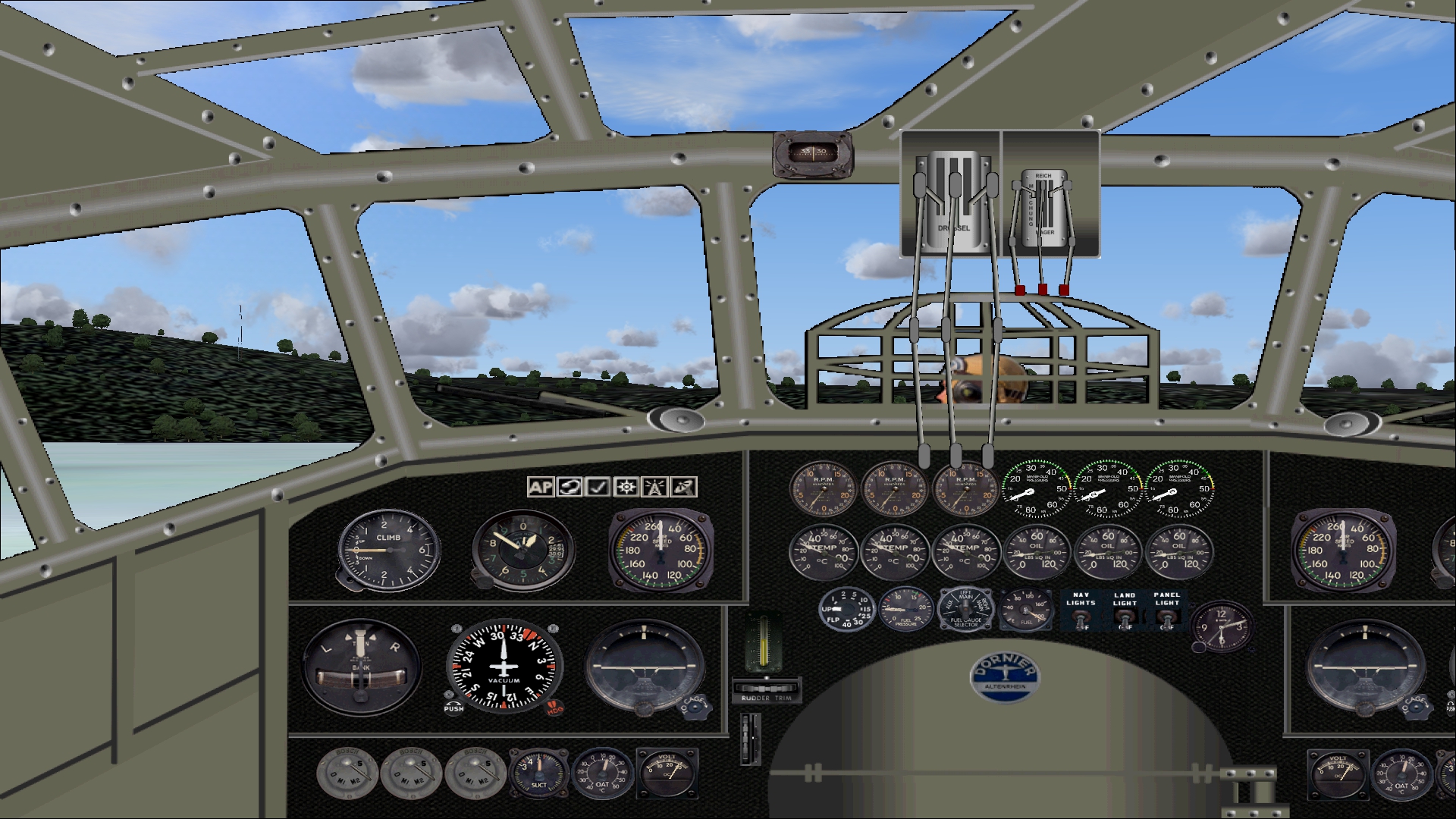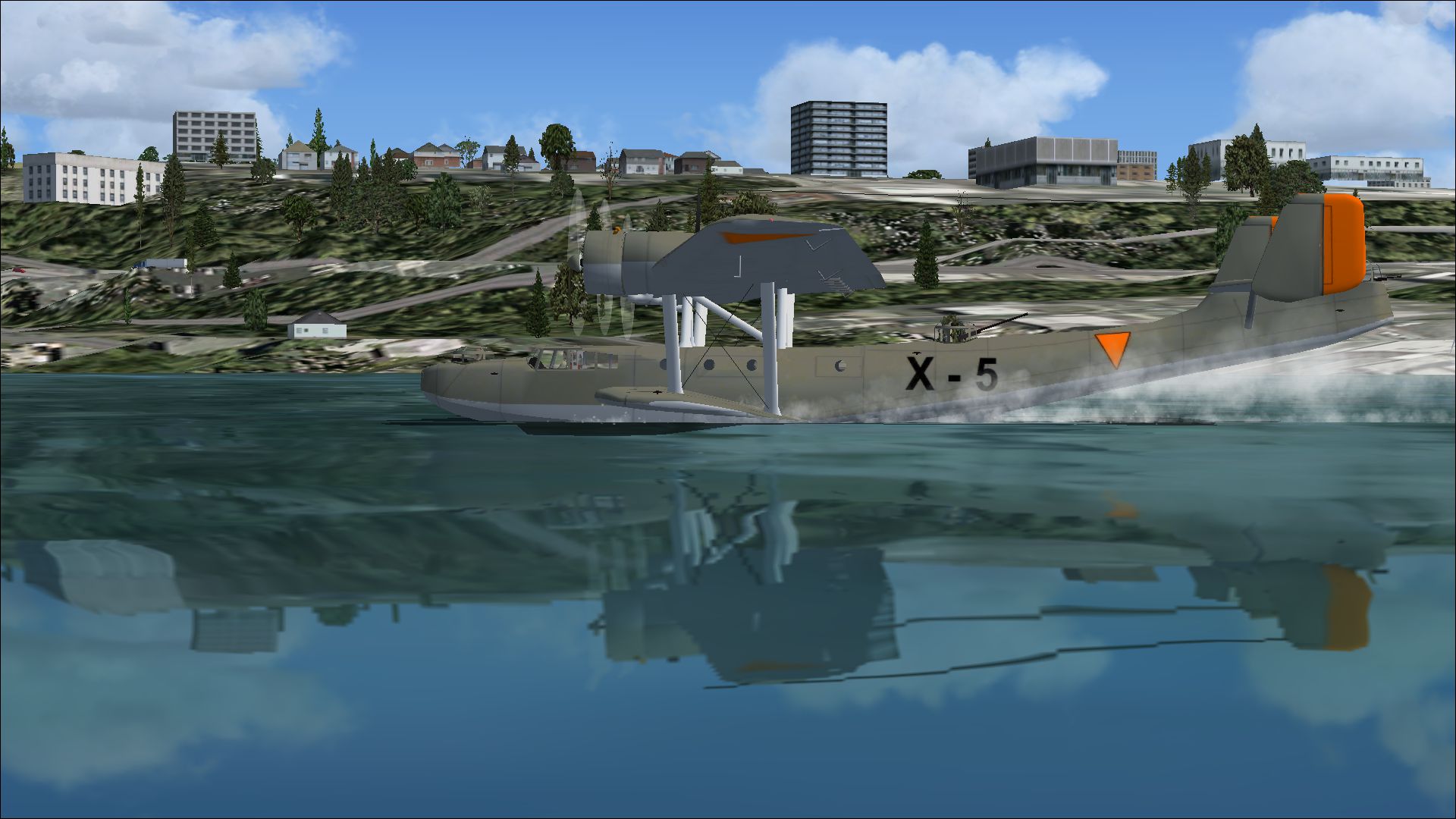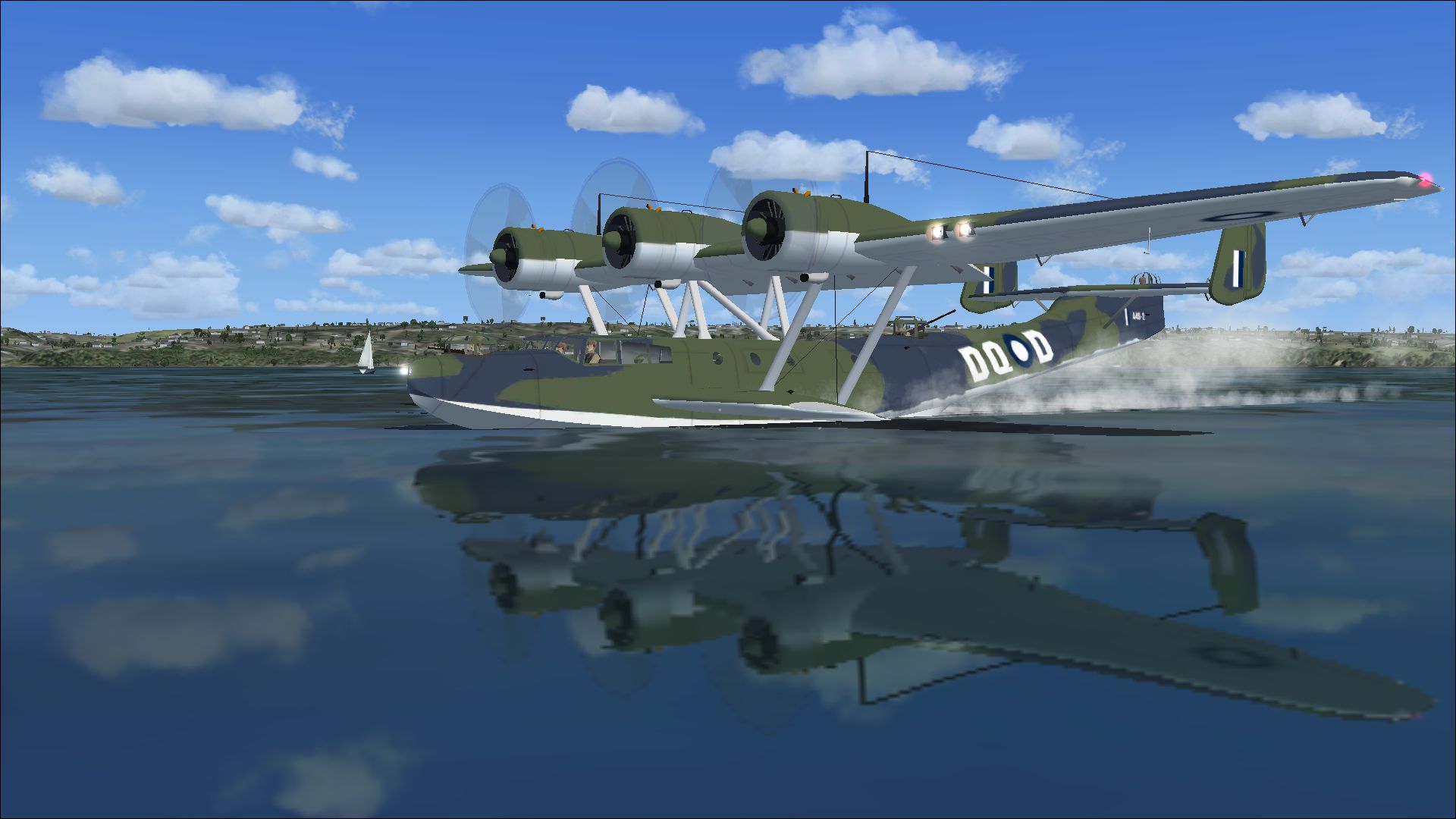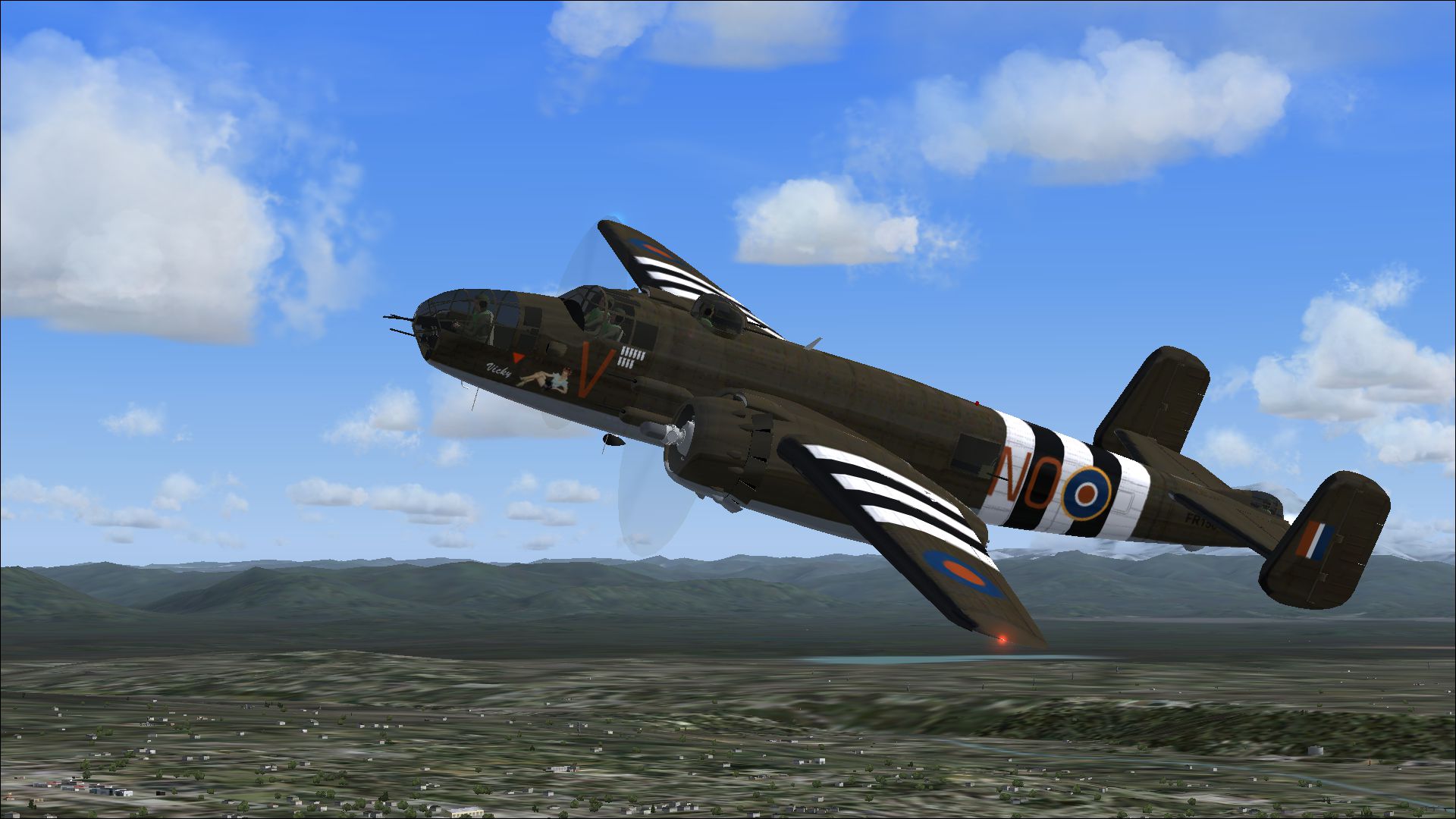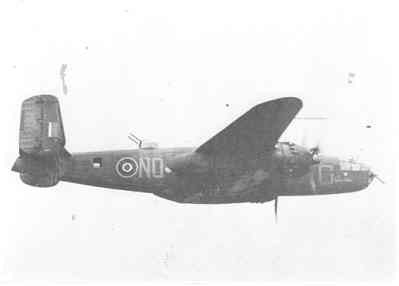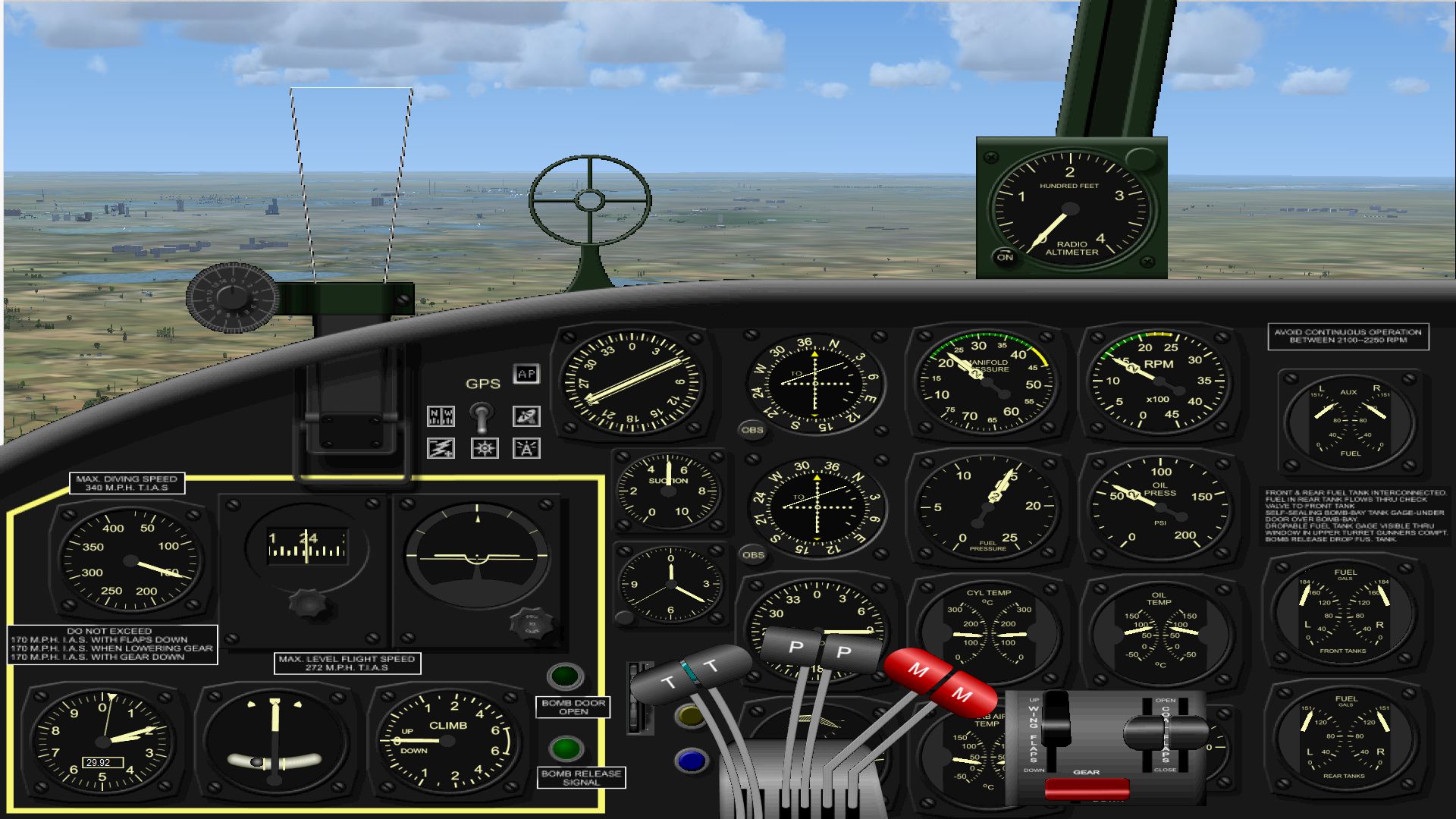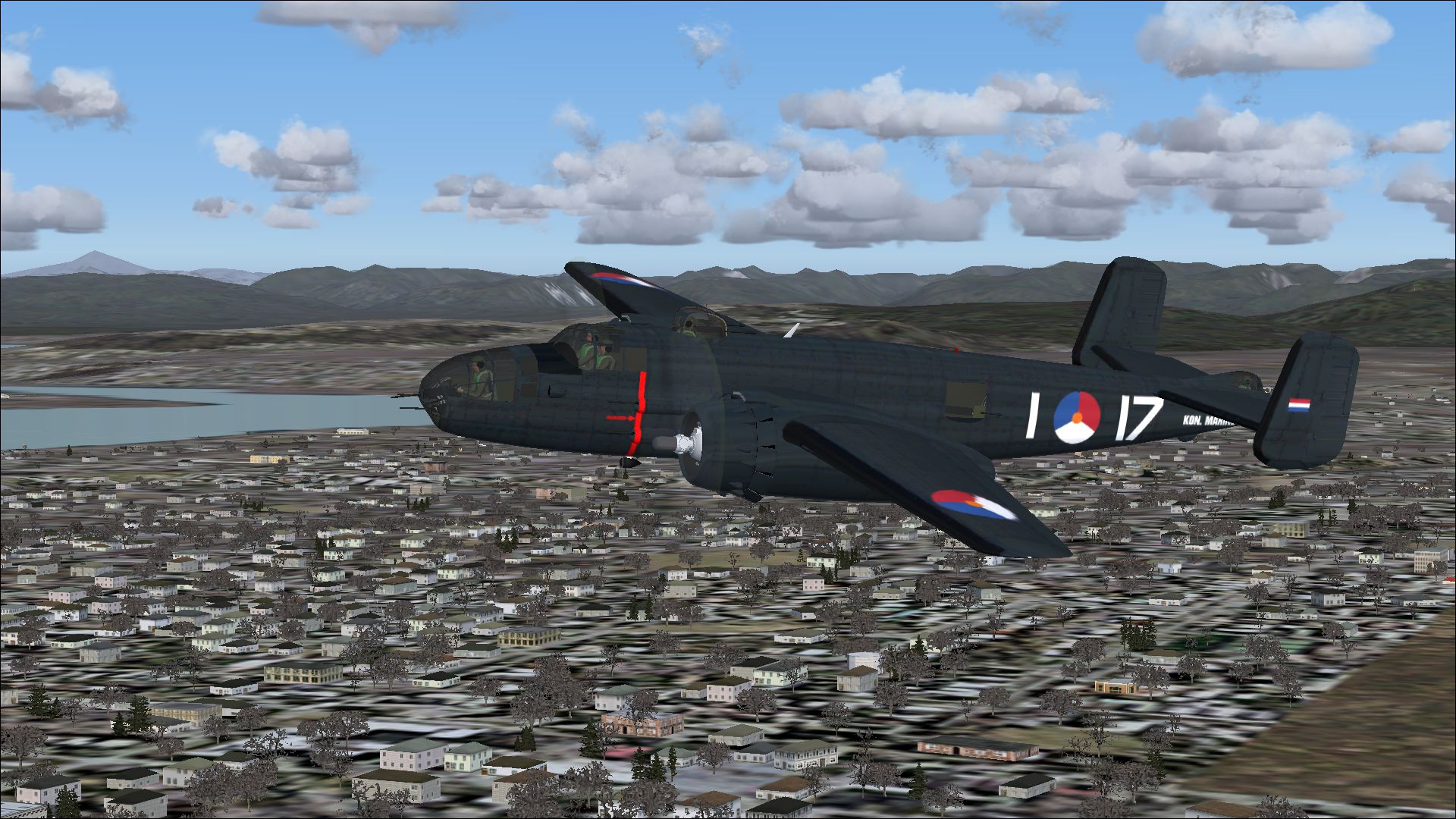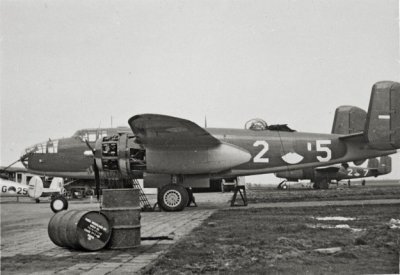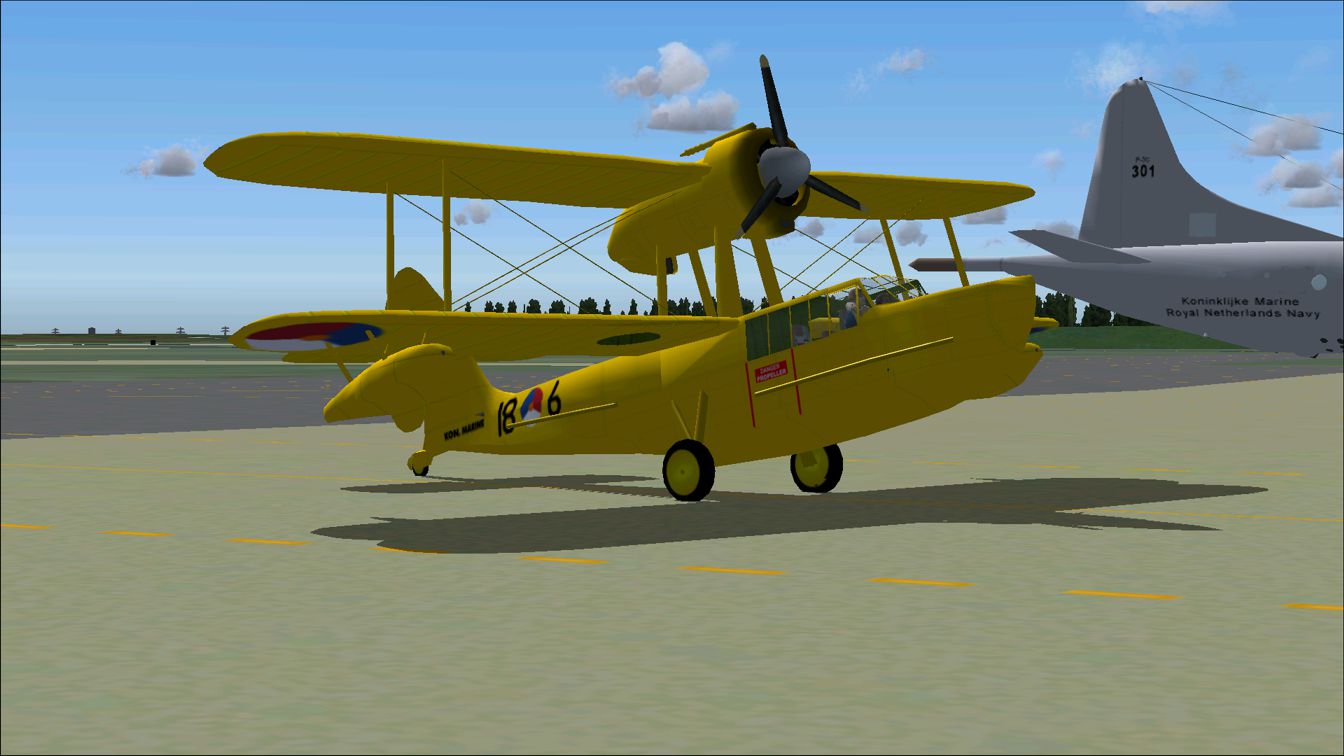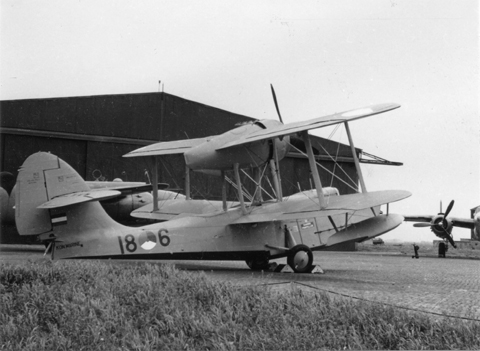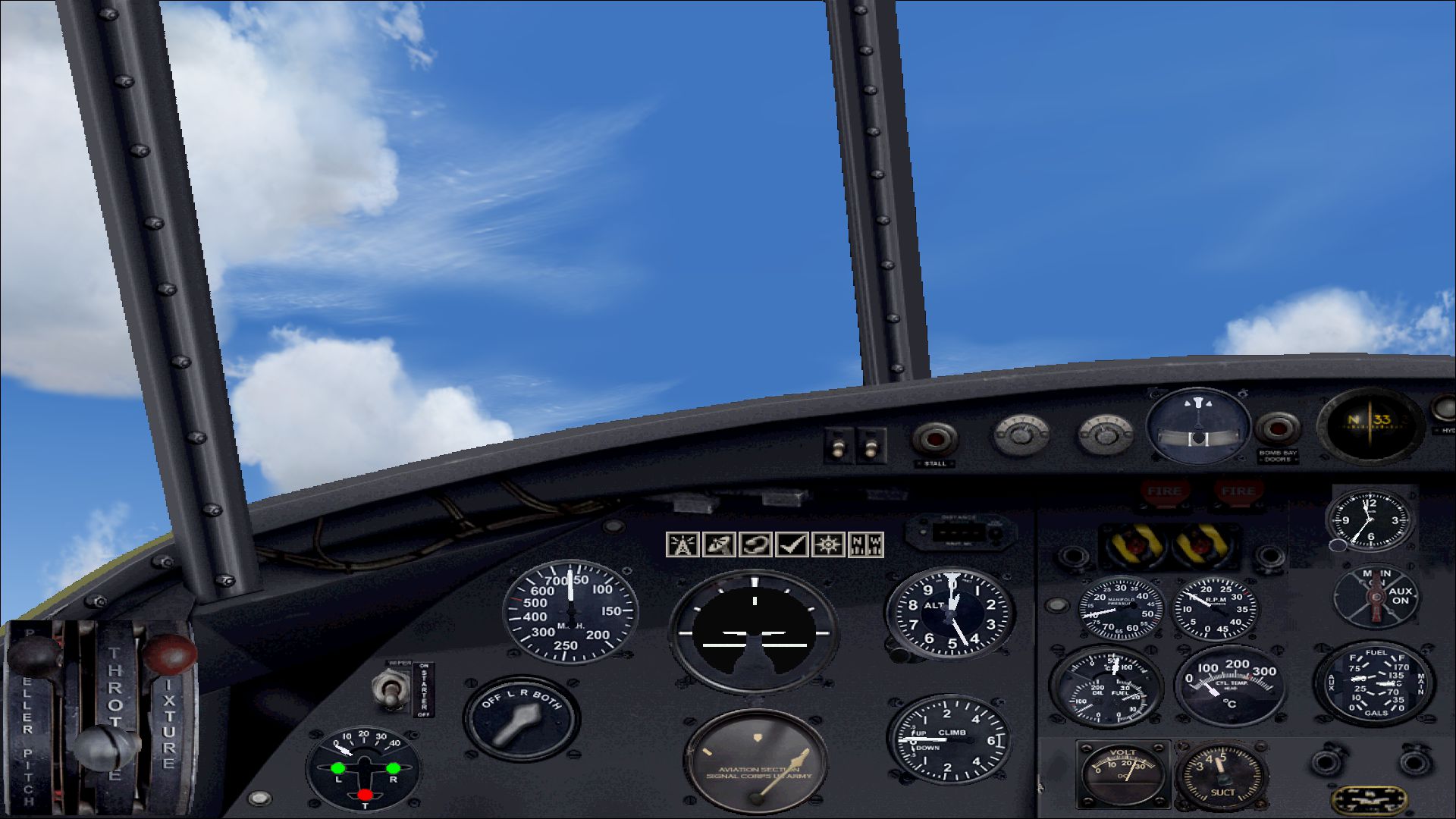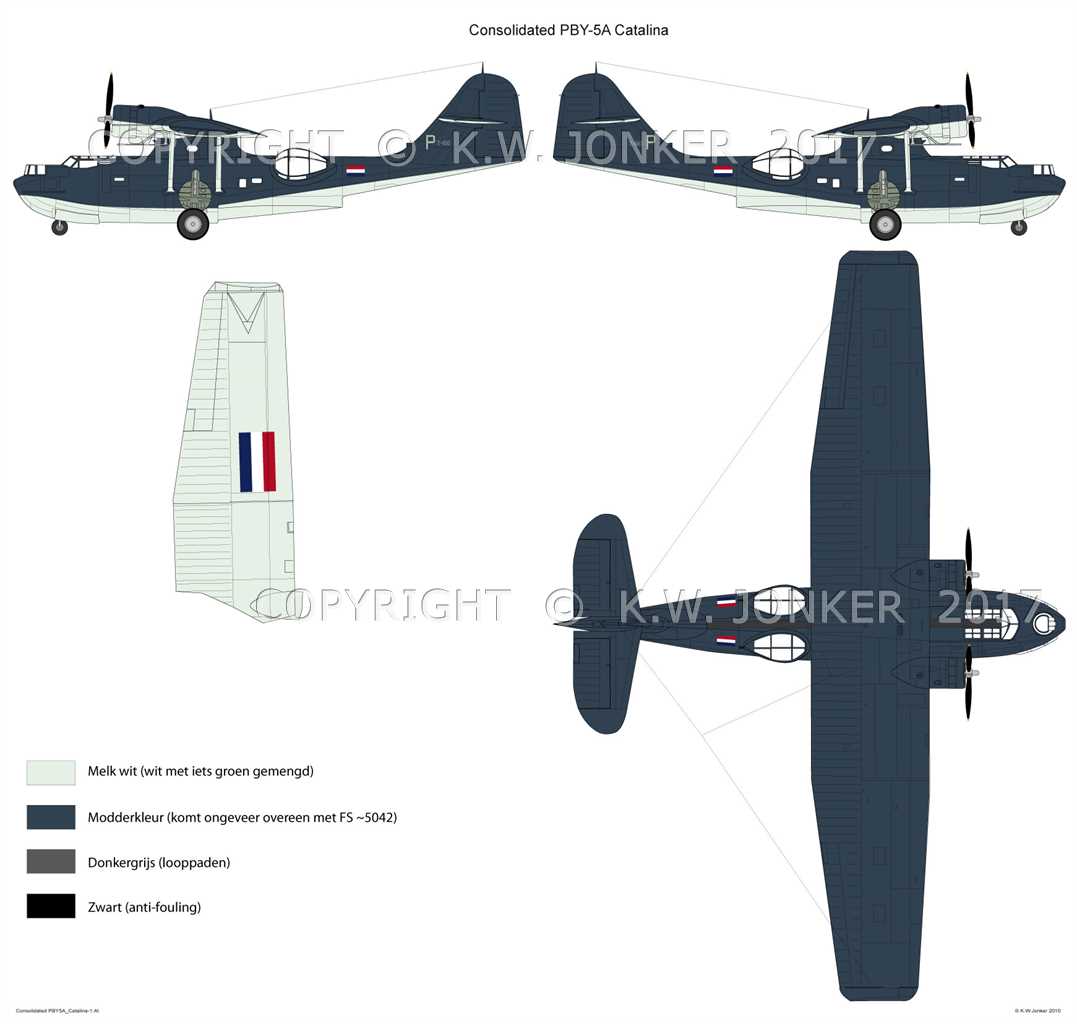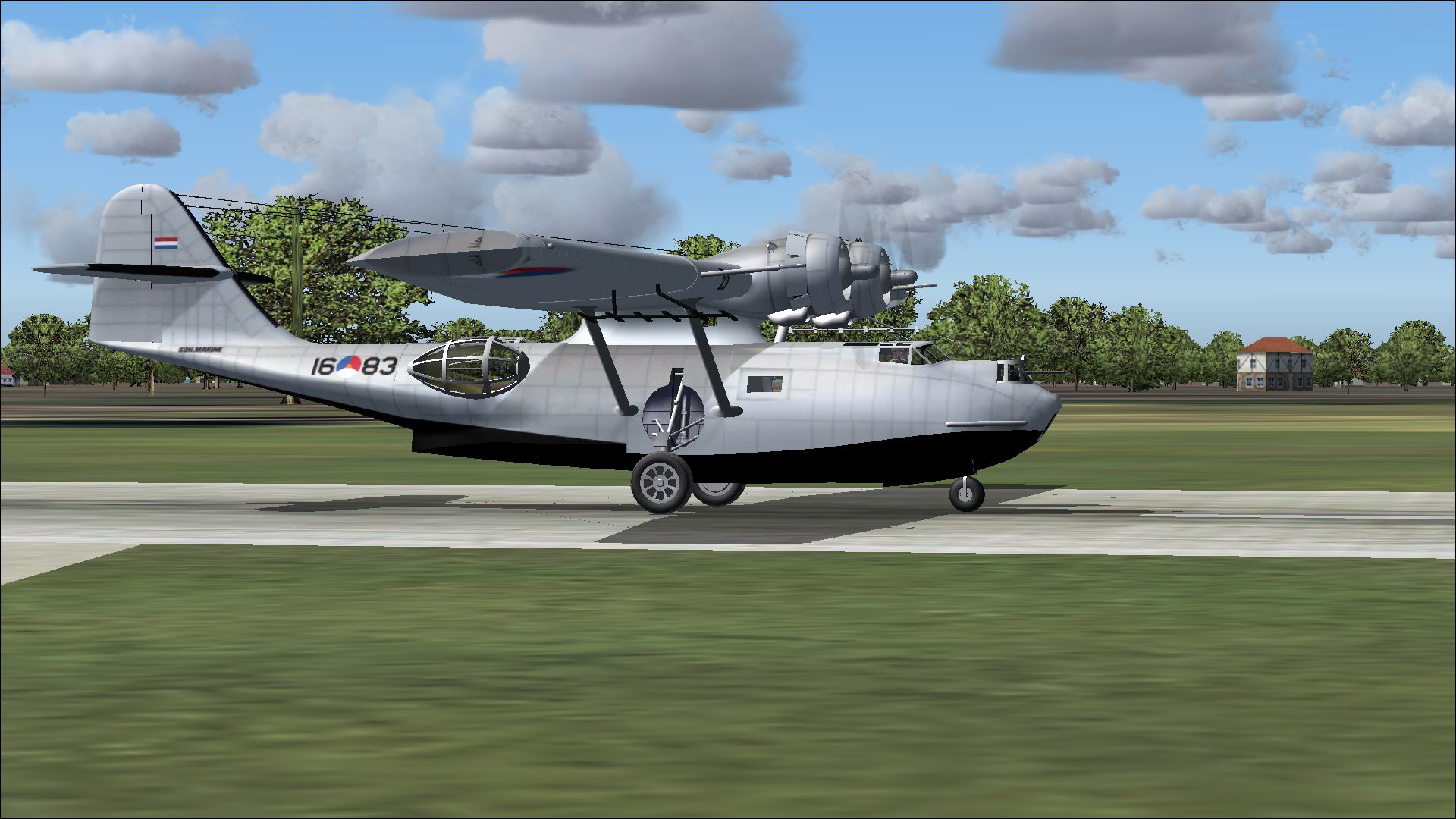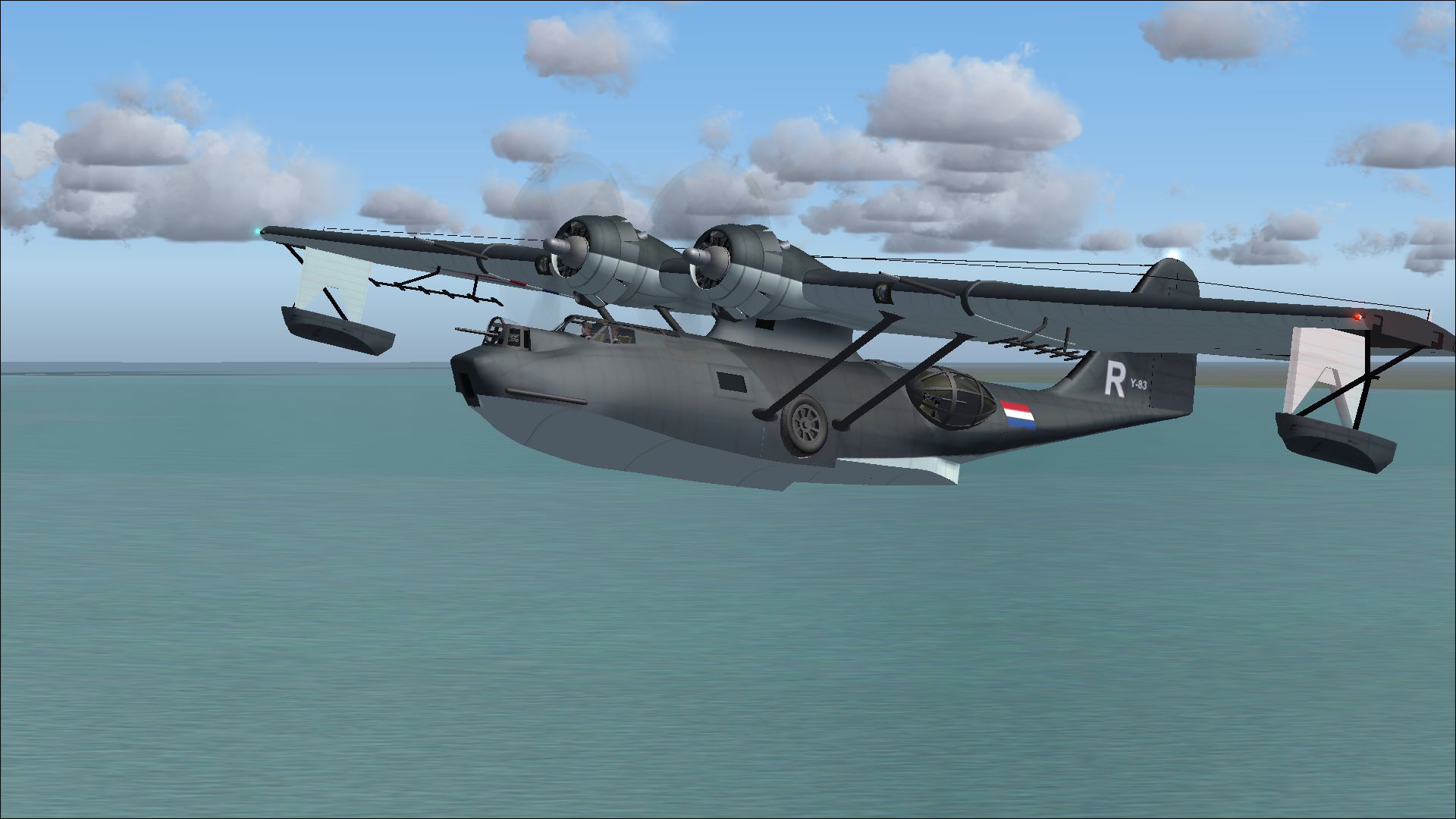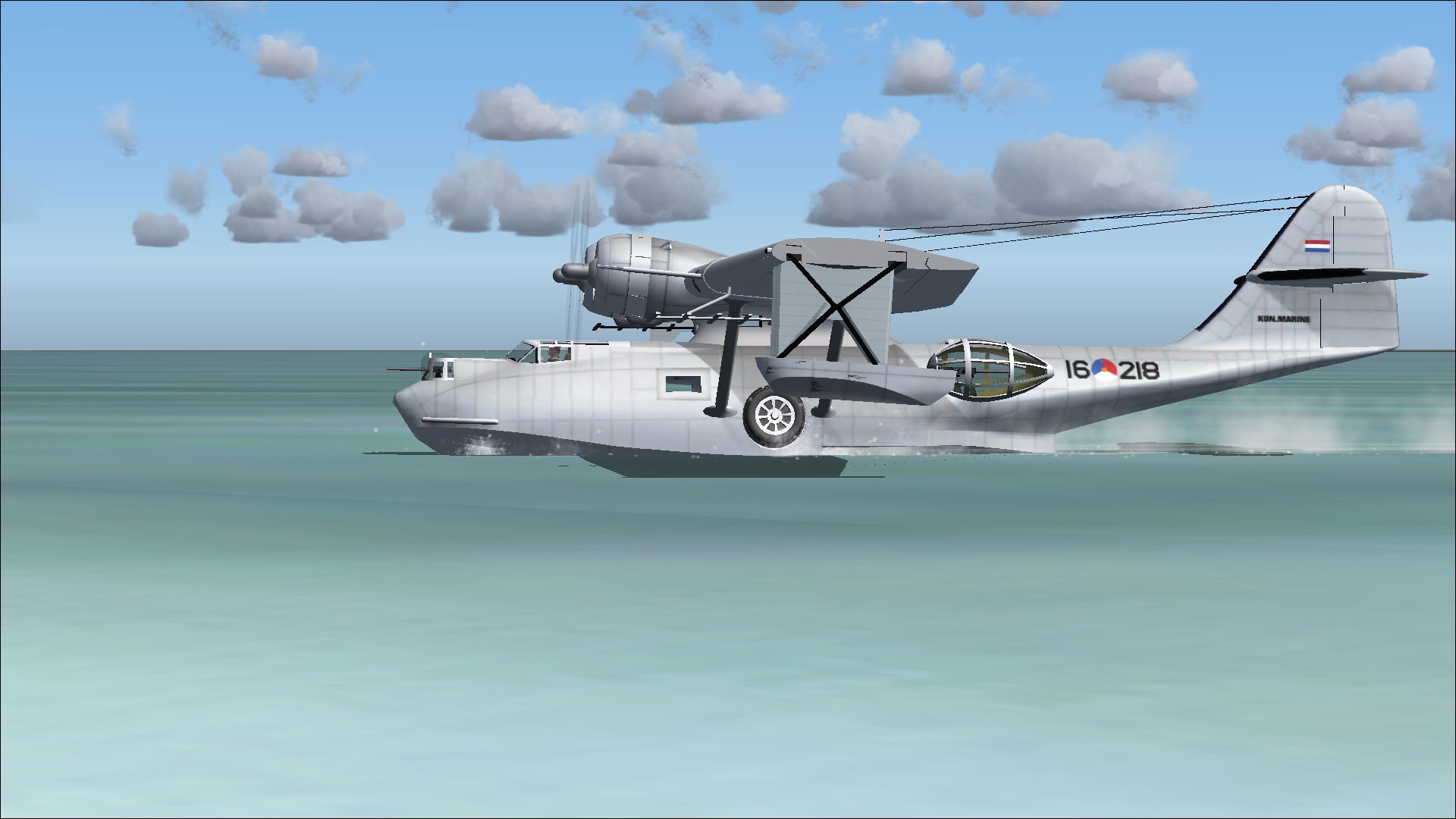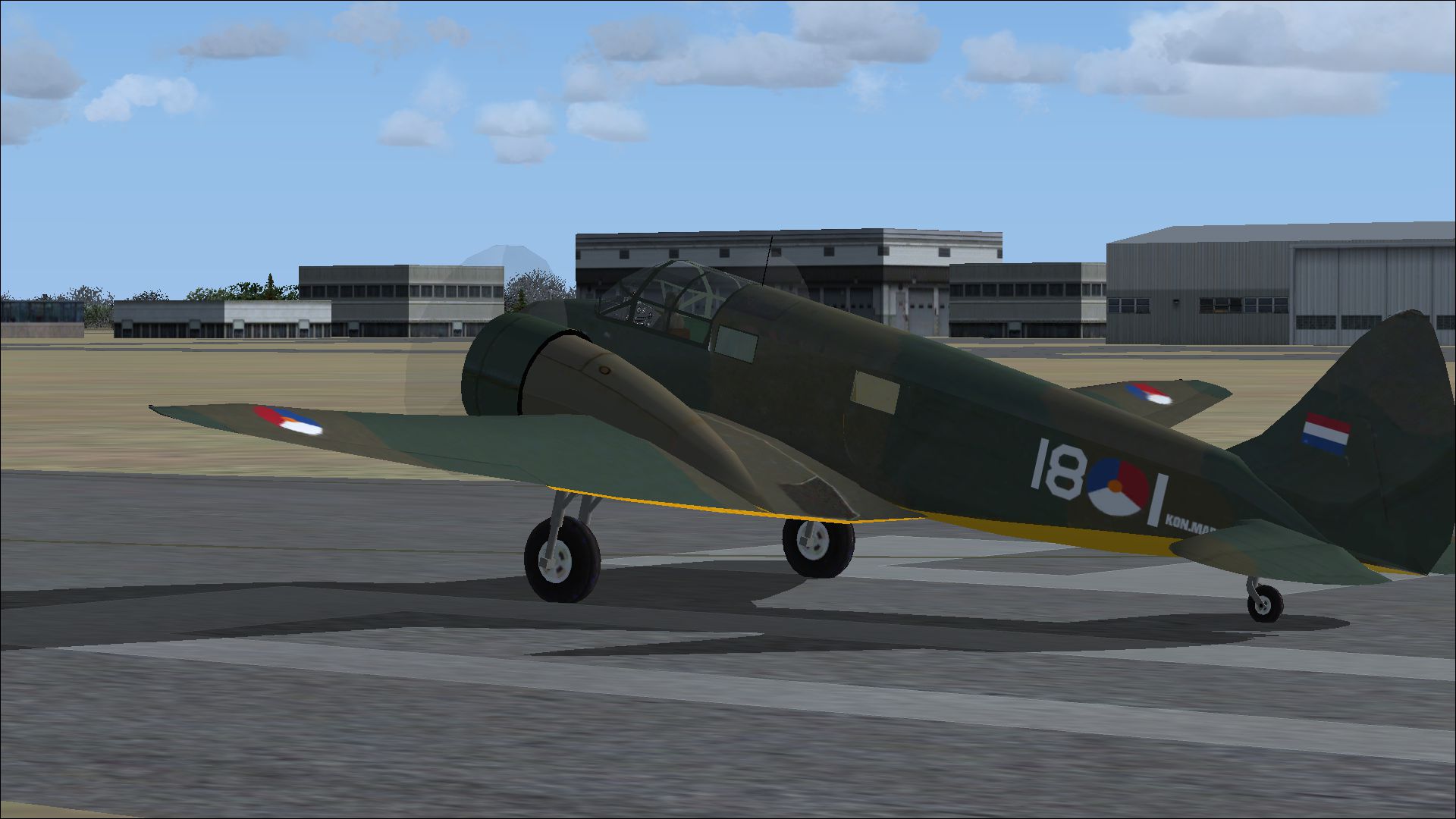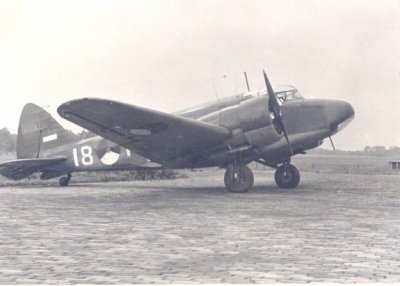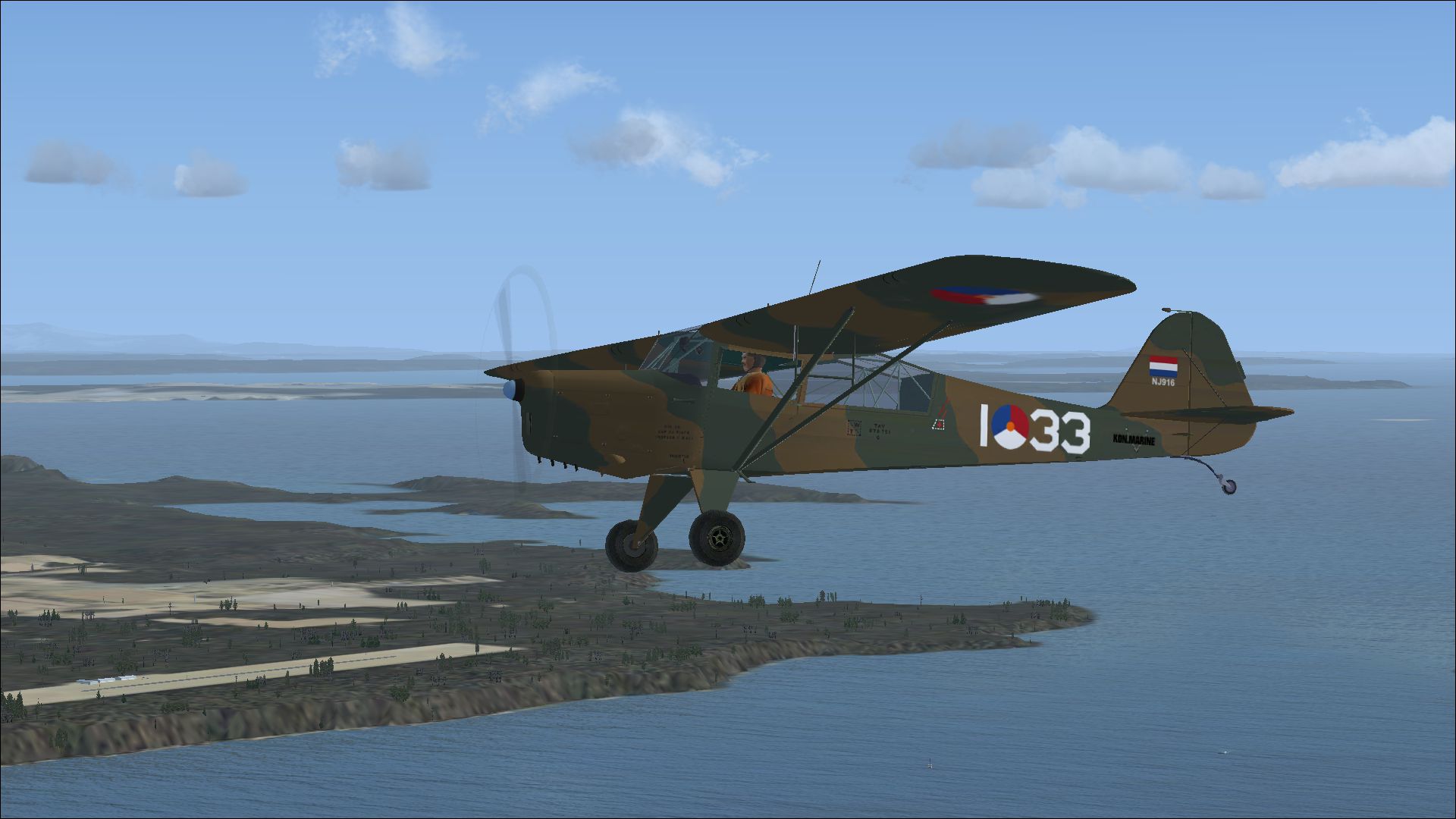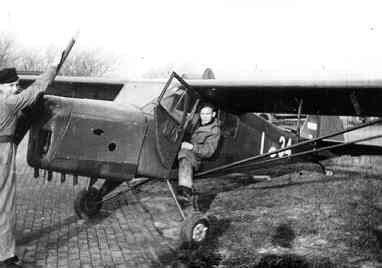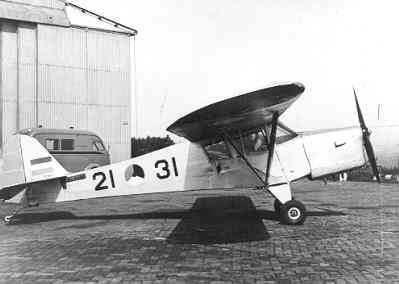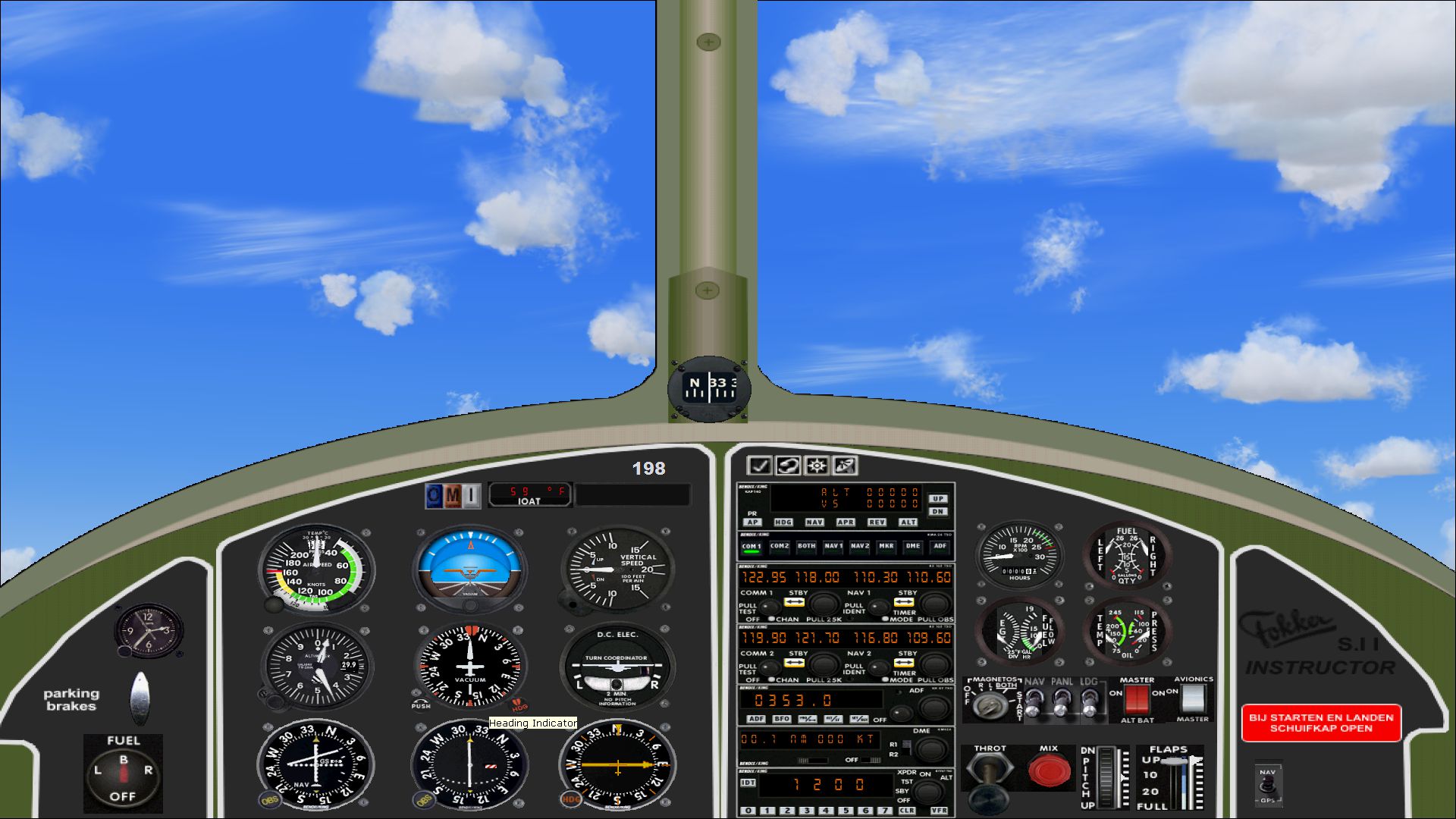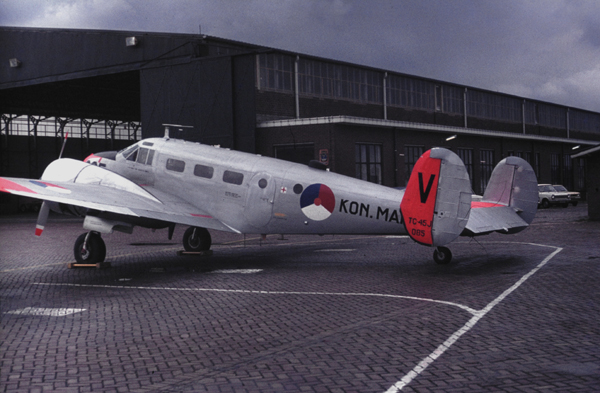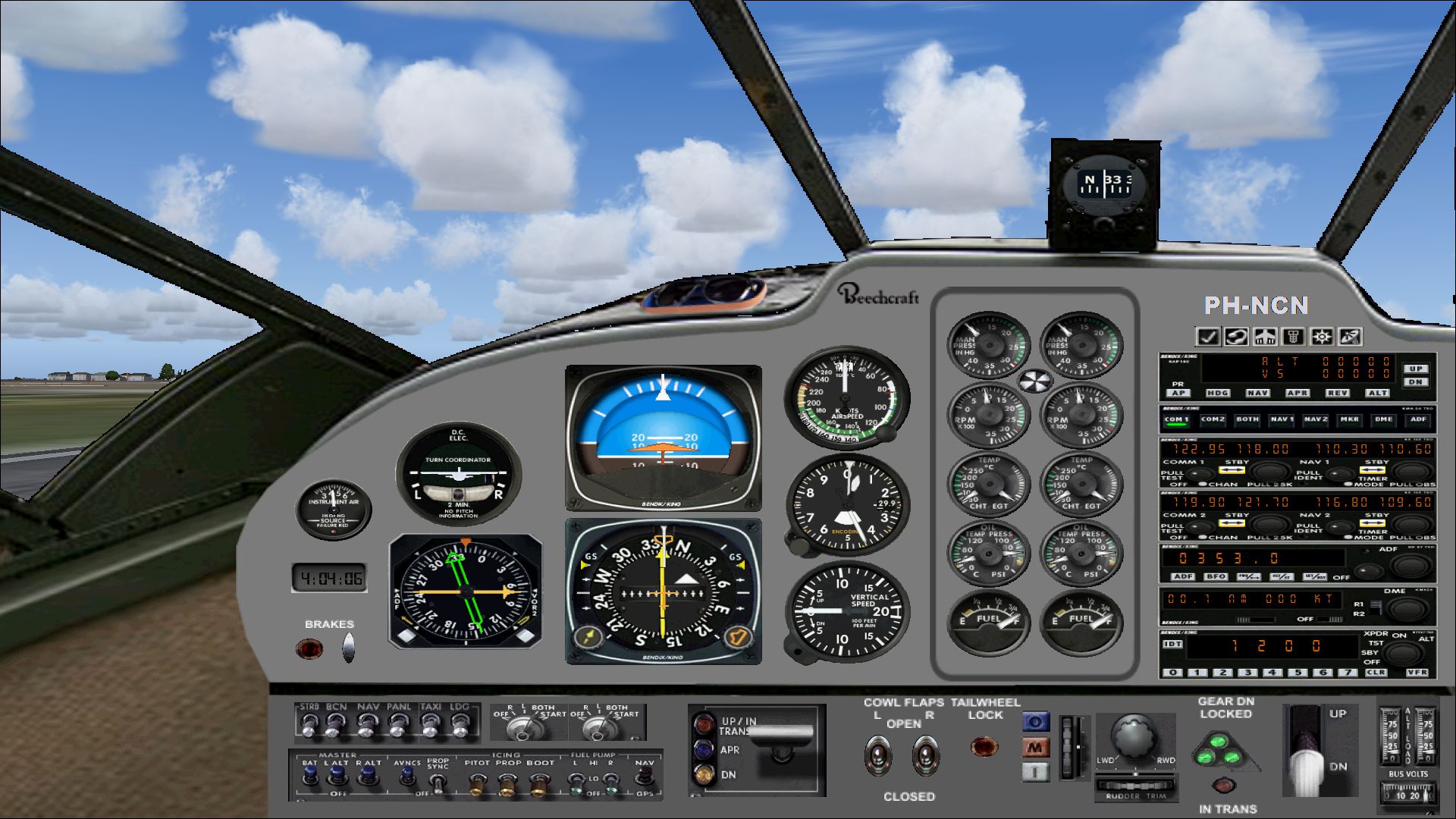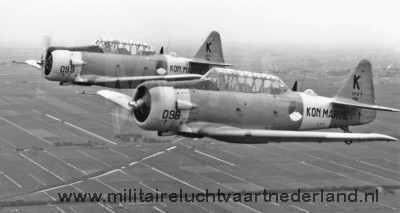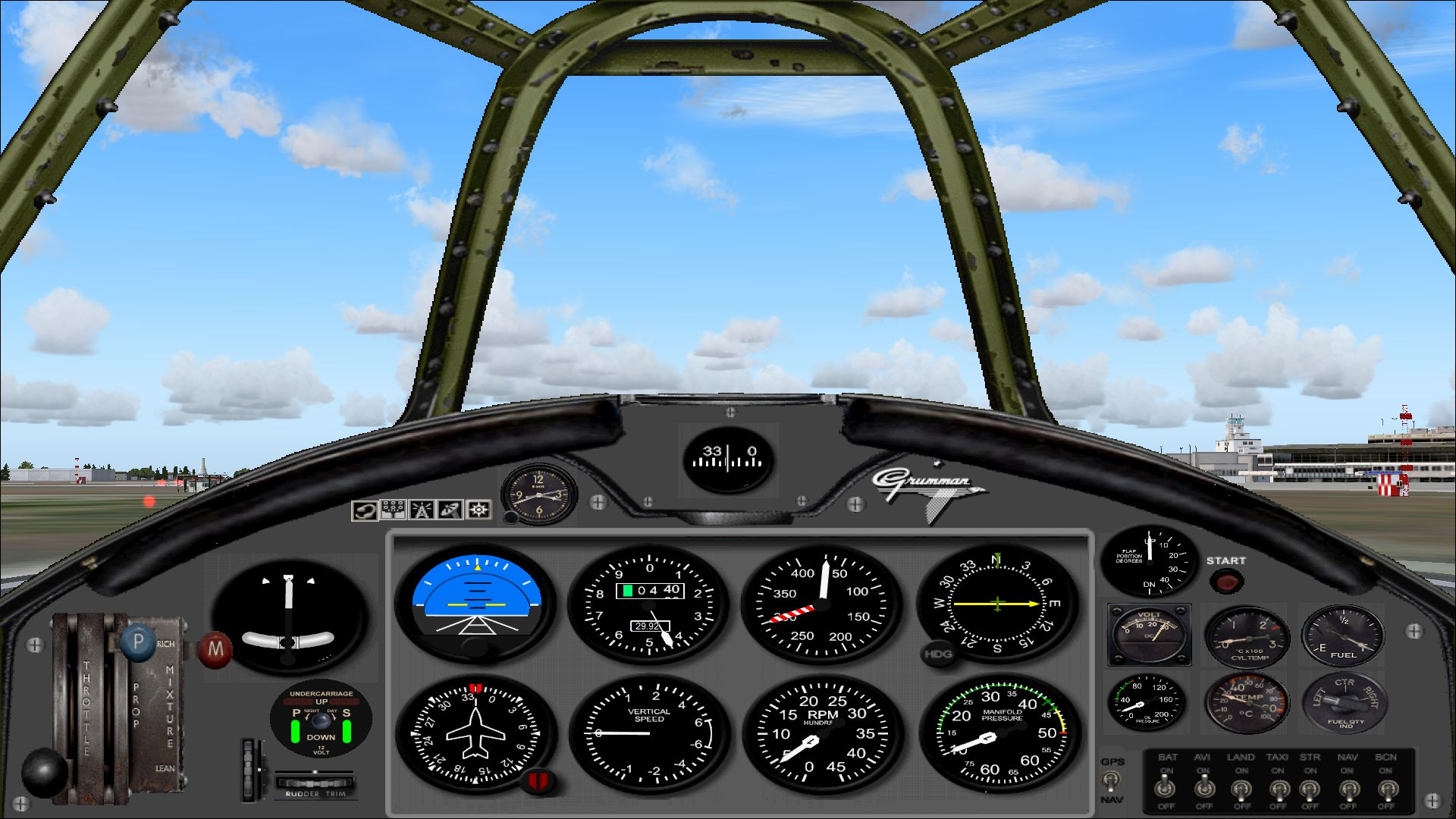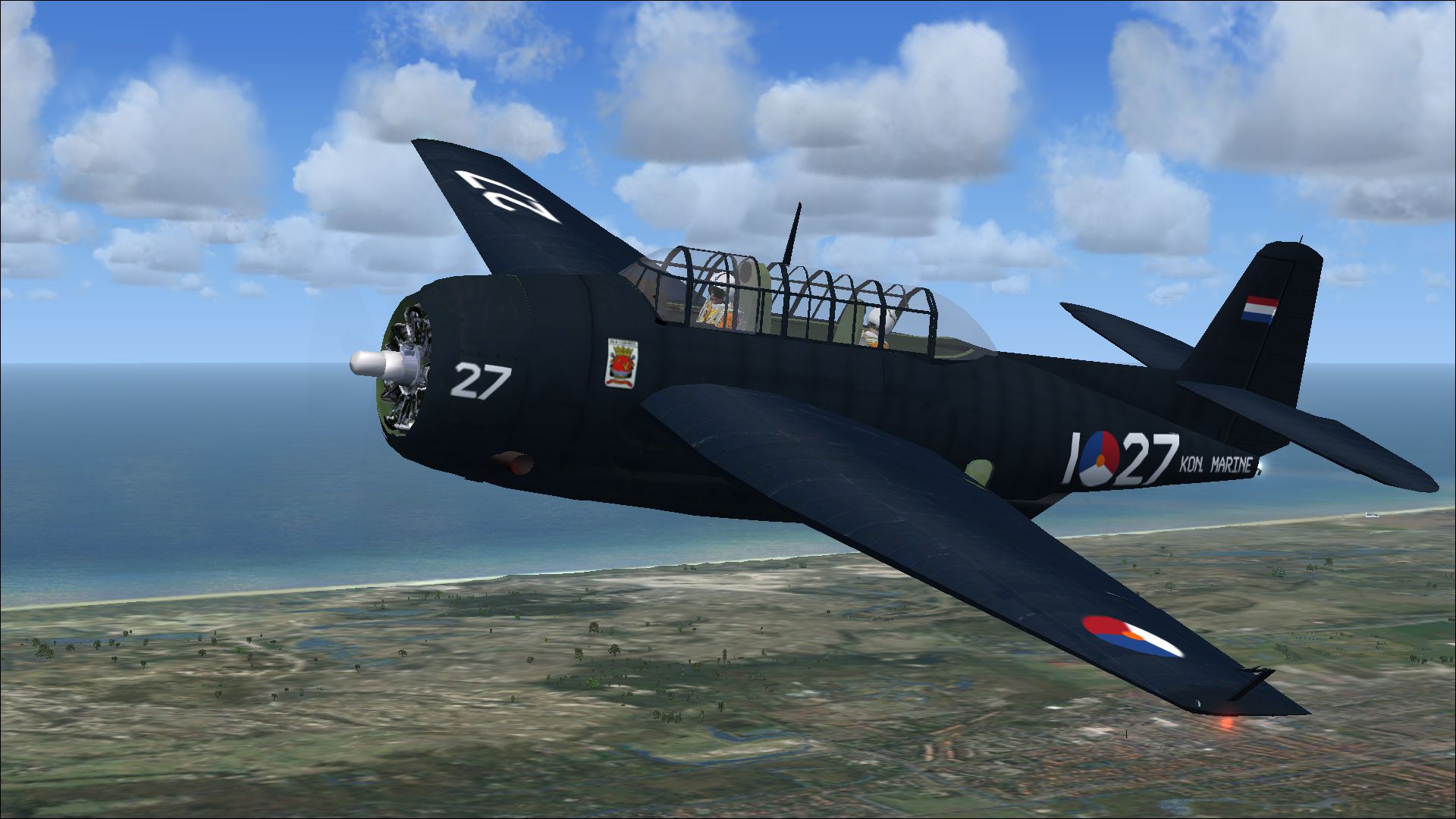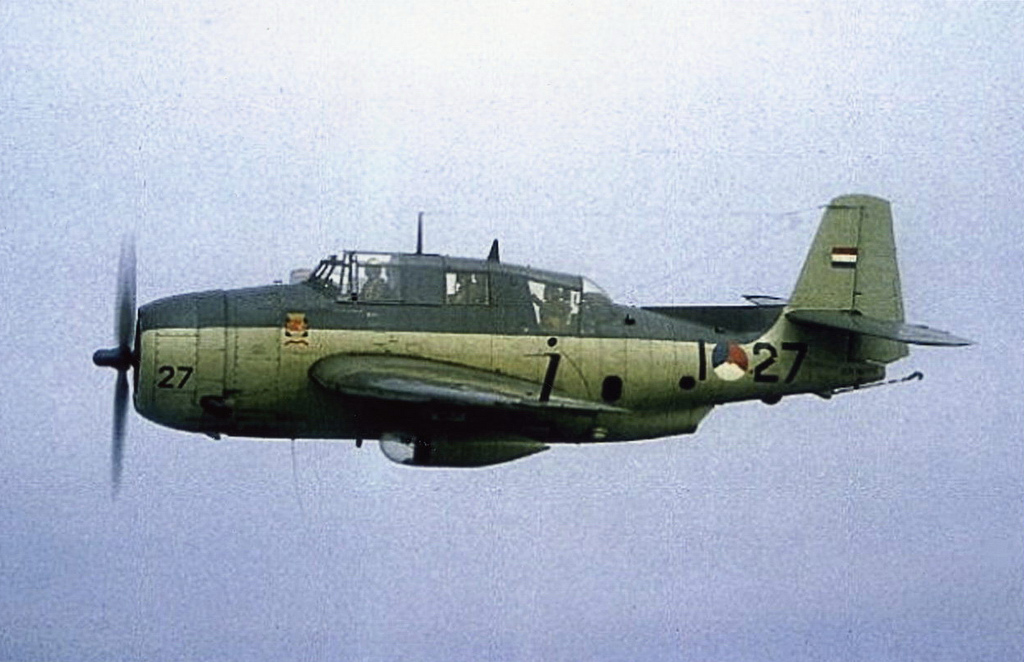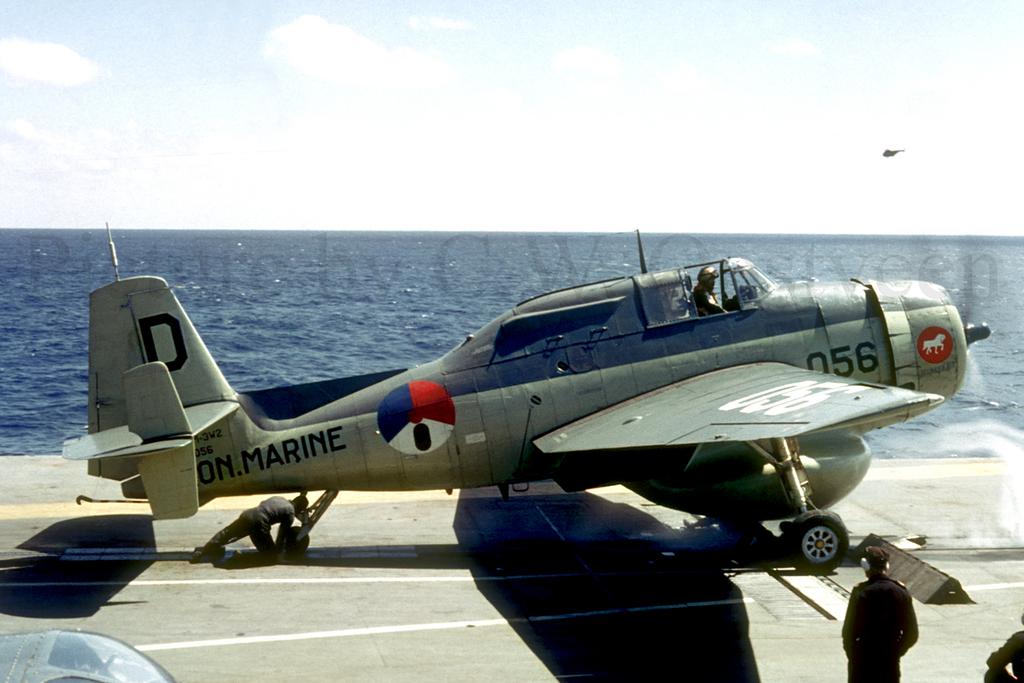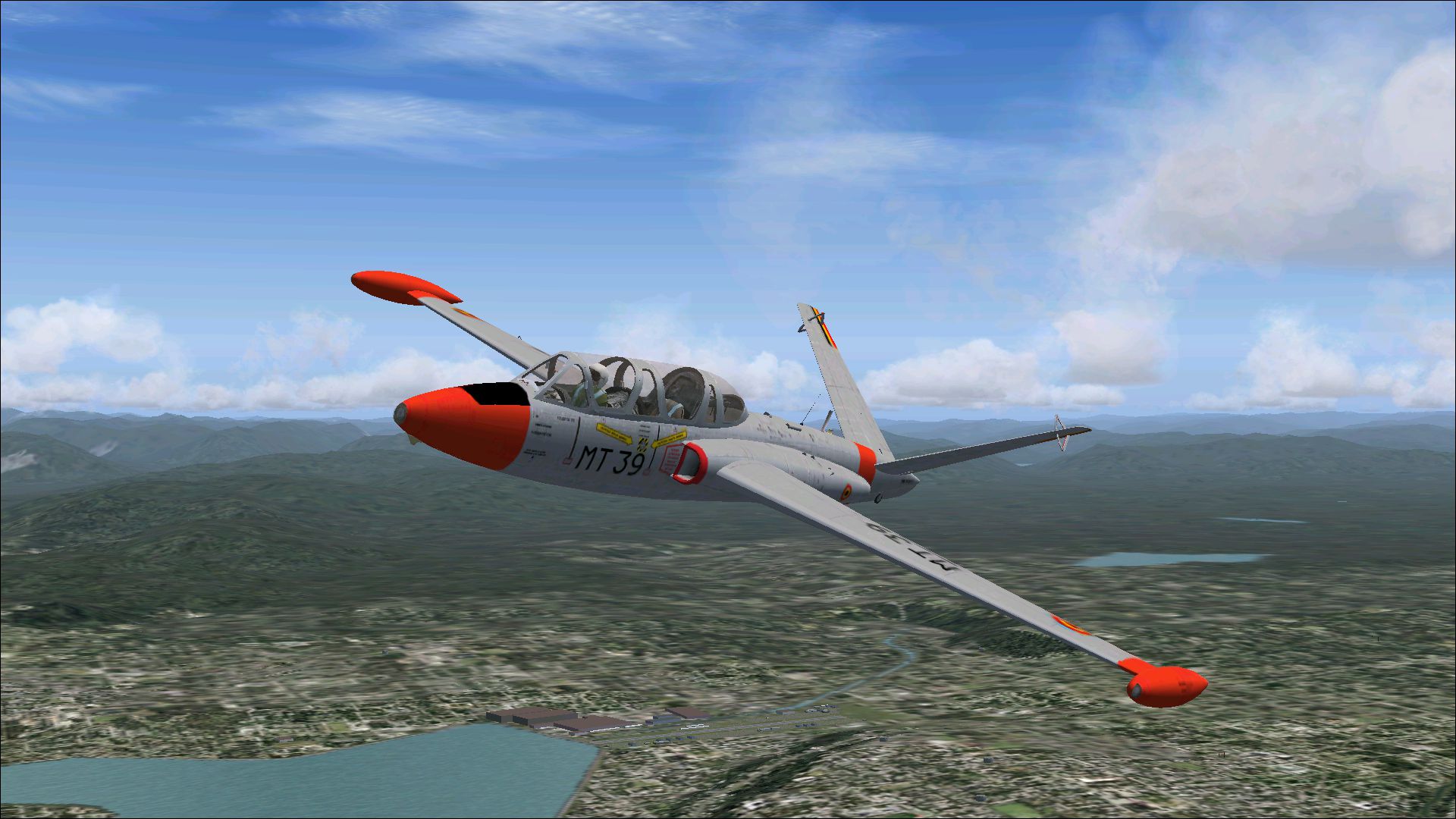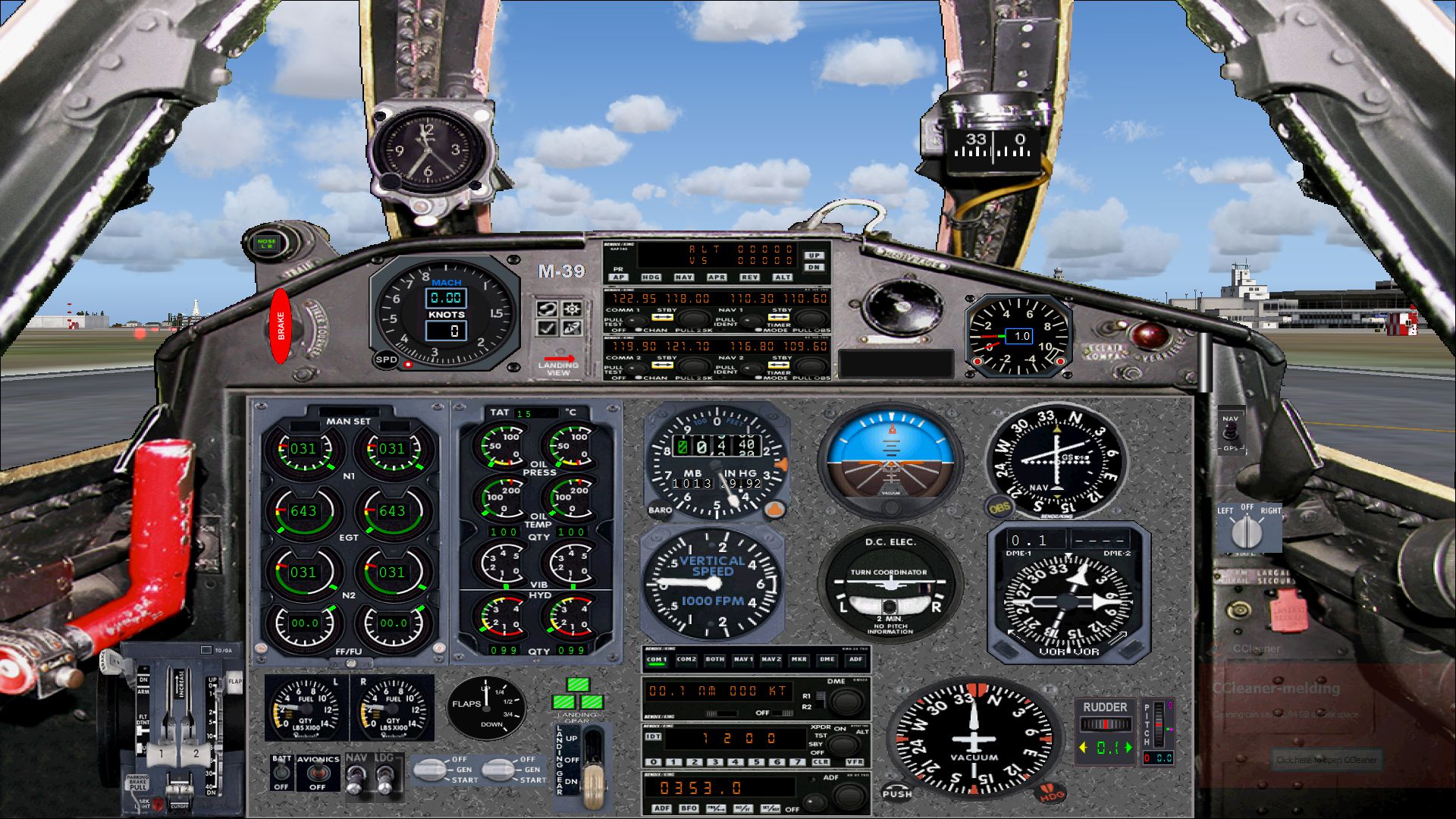Type: Breguet 1150 Atlantic 1
Program: FS2004 and FSX
Model: Massimo Taccoli
Operator: MLD Dutch Naval Service
Download: Complete aircraft
Following NATO specifications from 1958, the Atlantic was designed by Breguet as a maritime patrol aircraft as a successor to the Lockheed Neptune. The development and construction were done by a European consortium of manufacturers under the name of SECBAT (Société d'Étude et de Construction de Breguet Atlantic).The first prototype flew in October 1961, the second in February 1962. In 1963, the French Navy ordered 40 aircraft and Germany 20, which were delivered between 1965 and 1968. Production had actually just ended when the MLD(Dutch Naval Service) ordered 9 aircraft, followed later by an order for 18 aircraft for Italy. The MLD Atlantics were delivered from February 1970 to February 1972. The MLD was not very happy with the aircraft. Two crashed into the sea due to engine trouble and a third had to make an emergency landing off the Dutch coast near Wassenaar. At the end of 1984, the remaining five were sold to France and replaced by the Lockheed Orion.
Type: Grumman Tracker S2F-1
Program: FS2004 and FSX, pack with 2 repaints
Model: Milton Shupe
Operator: MLD Dutch Naval Service, KLM Technical School
Download: Complete aircraft
Under the Mutual Defense Assistant Program (MDAP), the MLD(Dutch Naval Service) received in 1960 26 US-built S2F-1 Trackers in 1961 added with 17 more Canadian-built CF2F1's. The 151 served on the aircraft carrier "Karel Doorman" and when the ship was taken out of service, at Valkenburg airbase near The Hague. In 1975 the aircraft was taken out of the fleet and donated to the KLM Engeneering School in Hoofddorp (now ROC Amsterdam) for the training of aircraft mechanics. The aircraft was recently restored and painted in its original MLD livery. Today it is part of the collection of the Aviodrome Museum at Lelystad Airport.
Type: Fouga CM 170 Magister
Program: FS2004 and FSX
Model: Restauravia
Operator: Belgian Airforce
Download: Complete aircraft
In 1949, the Armée de l'Air Française (French Air Force) decided to equip their flying schools with a two-seats jet-powered trainer. Turbomeca began with the study and construction of a engine with 400kg thrust. A suitable motor was not available at that time. Halfway through 1952 came the Turbomeca Marboré II with the desired thrust available. The by Air Fouga developed CM 170 made ??with these engines its first flight on 07.23.1952. Besides France ,the CM 170 was purchased by twenty countries. The total production amounted to 929 copies. Belgium ordered in 1958 45 Magisters to replace its T-6 Harvard and bought another 5 in 1970 from the German Air Force. Belgium and the Netherlands had a joint pilot training. During the Advanced Flight Training a 150 hours were flown on the Magister..
Type: Lockheed PV-2
Program: FS2004 and FSX
Model: Milton Shupe
Operator: Marine Luchtvaartdienst(Dutch Naval Service)
Download: Complete aircraft
The PV-2 was developed from the Lockheed Ventura PV-1. From 1944 onwards more than 500 were produced for the US Navy and deployed as a maritime reconnaisance and patrol bomber. At the end of WII, the PV-2 half of the US Navy patrol squadrons were already equipped with the PV-2 and after the war the aircraft became the standard maritime reconnaisance and patrol bomber of the US Navy. NATO was established in 1949 and the Netherlands was asked to participate in NATO maritime protection program of the North Sea, The Channel and the northern part of the Atlantic Ocean. The Netherlands had no money to buy the required aircraft.
The MDAP (Mutual Defense Assistance Program) provided a solution. The USA offered for the time being 18 PV-2s till the Netherlands later could replaced them by the more modern Lockheed P2V-5 Neptune. After the training of crews the USA the aircraft were flown to the Dutch Valkenburg Air Base at the end of 1951. Until 1955 they were used for OSRD tasks until they were replaced by the Lockheed Neptunes. The PV-2s were then transferred to Portugal.
Type: Grumman Avenger TBM-3E
Program: FS2004 en FSX, pack with 5 Avenger repaints
Model: A.F.Scrub
Operator: MLD Dutch Naval Service
Download: Complete aircraft
The 21-32 is one of the 20 TBM-3E’s purchased by the MLD in 1958. They are mainly used for training on the basis Valkenburg and De Kooy. De TBM-3E had a stronger airframe, search radar and a ventral gun deleted.
..
Type: Grumman Avenger TBM-3W
Program: FS2004 en FSX, pack with 5 Avenger repaints
Model: A.F.Scrub
Operator: MLD Dutch Naval Service
Download: Complete aircraft
The S and W-types formed the core of the anti-submarine warefare and a large part was stationed aboard the aircraft carrier Karel Doorman. The TBM-3W2 was equipped with the APS-20 radar.The TBM-3S was equipped with a searchlight for use during night flights. Four depth charges could be taken and two to six sono buoys could be hanged under its wings.
Type: Grumman Avenger TBM-3S2
Program: FS2004 en FSX, pack with 5 Avenger repaints
Model: A.F.Scrub
Operator: MLD Dutch Naval Service
Download: Complete aircraft
As part of the Mutual Defense Assistant Program (MDAP), the MLD received in 1954 a total of 68 Avengers on loan from the USA, divided into two types, namely 34 TBM-3S2; 24 TBM-3W2. In 1958, another 20 TMB-3E / TMB 3E2 were purchased from the RAF. The S and W-types formed the core of the anti-submarine warefare and a large part was stationed aboard the aircraft carrier Karel Doorman. The TBM-3W2 was equipped with the APS-20 radar.The TBM-3S was equipped with a searchlight for use during night flights. Four depth charges could be taken and two to six sono buoys could be hanged under its wings..
Type: North American/Noorduyn AT-16-ND Harvard IIB
Program: FS2004 and FSX
Model: AI model Mike Cronin
Operator: R.Neth.N.A.S
Download: Complete aircraft
The 043 (ex RAF FT176) has flown first with the KLu(RNAF) till 1965 and then transferred to the MLD(Dutch Naval Airservice) and got the new registration 043. In 1971 the aircraft was sold and registered as PH-KMA. In 1978 the registration was canceled.
Type: Beechcraft TC-45J
Program: FS2004 and FSX
Model: Milton Shupe, Scott Thomas, André Folkers
Operator: R.Neth.N.A.S
Download: Complete aircraft
From August 1953 till February 1974 the Marine Luchtvaartdienst (Dutch Naval Air Service) had six Beechcraft TC-45J's in its fleet. They came from the WWII-warsurplus of the USA and obtained through the Mutual Defence Assistance Program. They were used for the training of navigators, telegraphers, observers and as liaison aircraft. . I have combined all Dutch Model 18 and TC-45 liveries in one download and you can find them on the download page: Beechcraft Model 18 and TC-45J Dutch pack for FS2004 and FSX
Type: Fokker S.11 Instructor
Program: FS2004 and FSX, pack with 4 repaints
Model: Italo D'Attomo andGiovanni Quai
Operator: LKS/KLu, R.Neth.N.A.S, mister Sloots
Download: Compleet aircraft
Immediately after WII Fokker S.11 developed the S.11 as a successor to the outdated De Havilland Tiger Moth for basic flight training. Pupil and Instuctor sat next to each other plus a third passenger on the backseat. First flight on December 18, 1947. In the Netherlands, Fokker built 40 S.11's for the Neth.Air Force(LSK), plus 41 for Israel. In Italy, Macchi built 150 S.11's licensed as M416. Fokker Brazil also built 100 for the Brazilian Air Force. The repaint is construction No: 6281 as E 38 supplied to the Neth Air Force in 1950. In 1959 it got a new scheme. In 1970 the plane was transferred as 198 to the Dutch Naval Air Service. Sold in 1975 to Mr. Sloots and registered as PH-SLO. After a recent restoration, the PH-SLO flies from Teuge Airport again in the colors of the Klu.
Type: Taylorcraft Auster Mk3
Program: FS2004 and FSX, pack with 2 repaints
Model: Dave Molyneaux
Operator: R.Neth.N.A.S
Download: Complete aircraft
Four went to the MLD(Dutch Naval Airservices) for primary pilot training. Some have made a landing on the aircraft carrier “Karel Doorman”. The Austers have been in MLD-service till 1953. Afterwards the 21-33 has been used in the gliding club on airbase Valkenburg near Leiden till August 1956..
Type: Airspeed A.S.10 Oxford
Program: FS2004 and FSX, pack with 2 repaints
Model: Keith Hackett
Operator: R.Neth.N.A.S
Download: Complete aircraft
From the WII surplus of the RAF the MLD purchased 5 Ansons and leased another four. The MLD used them till 1952 as trainers for the secondairy multi-engine training as well. The aircraft were delivered in RAF colors, the RAF roundels were replaced by the Dutch roundels and later they were painted navy grey. In 1952/53 they were replaced by the Beechcraft TC-45's. The 18-1 (RAF registration PH308) was in service with the MLD from October 1947 till September 1953.
Type: Consolidated PBY5A Catalina
Program: FS2004 and FSX, pack with 4 repaints
Model: Alphasim
Operator: MLD
Download: Complete aircraft
From 1946 till 1957 the Marine Luchtvaartdienst (Dutch Navy) had have 22 Catalina's in service. They came from the WWII-warsurplus of the USA and obtained through the Mutual Defence Assistance Program. They were used in the Indonesian Archipelago, New Guinea(Irian Jaya) and The Netherlands as SAR-aircraft, bomber, torpedo plane, transport and liaison aircraft.
Type: Supermarine Sea Otter Mk.II
Program: FS2004 and FSX
Model: A.F. Scrub
Operator: R.Neth.N.A.S
Download: Complete aircraft
The Supermarine Sea Otter was a British designed amphibian biplane of which the first was deliverd to the RAF in Januari 1943. In 1946 the production ended after 290 Sea Otters were build. 250 Mk. I which carried bombs and depth charges, and only 40 Mk.II which were employed for SAR duties. In 1947 bought the R.Neth.N.A.S 8 Sea Otter Mk.II's for SAR-duties and as plane guard on the aircraft carrier "Karel Doorman". In 1954 they were replaced by Catalina's and Sikorsky S-51's.
Type: De Havilland DH-82A Tiger Moth
Program: FS2004 and FSX
Model: Warwick Carter
Operator: R.Neth.N.A.S
Download: Complete aircraft
The 002 is one of th three aircraft which were acquired from the RNAF .From mid 50 years the Tiger Moth's were gradually replaced by the Fokker S-11. The 002 ( first registered as U-103) has been used from 1956 till 1966 as tow plane with the gliderclubs of the Naval bases Valkenburg and De Kooy.
Type: North American B-25J Mitchell
Program: FS2004 and FSX
Model: Mike Stone
Operator: RAF, R.Neth.N.A.S
Download: Complete aircraft,pack with 4 repaints
With 9,816 aircraft built, the Mitchell is the most built bomber in the Second World War. Many variants have been built which, depending on the type, were used as bomber and / or heavily armed attack plane for ground targets. In 1942 Mitchells attack Tokyo by surprise from aircraft carriers. After the May-invasion of The Netherlands by the Germans, some dozens of naval personnel managed to fly to England with Fokker T.VIIIw torpedo bombers. This group was assigned to the RAF and became Dutch squadron 320, equipped with AVRO Ansons and later Lockheed Hudsons alongside of the Fokkers. In 1942 it was decided to replace these aircraft with Mitchells B-25C / D and Js, which became operational from the end of March 1943. This repaint package contains the regular RAF painting plus that was used during the invasion in June 1944. After the war, the MLD received a total of 25 former Mitchells from the RAF to rebuild the MLD. They were stationed at Valkenburg air base. Six and later another five were demolished for spare parts. Most Mitchells were part of the MLD fleet until the end of 1949. The last two were retired at the beginning of 1952. They were succeeded by the Lockheed Harpoon which was more suitable for the specific MLD tasks.
Type: Dornier Do-24K1
Program: FS2004 and FSX, pack with 4 repaints
Model: Wim Vergeer
Operator: MLD
Download: Complete Aircraft
In 1926 the Dutch Navy ordered a number of Dornier Wal flying boats to patrol the vastness of the Dutch Indies. The Wal's performed good, but soon got outdated.In 1934 the Dutch Navy started an investigation into a succeeder for the Wal. Around that time Dornier-Metallbauten G.m.b.H. in Friedrichshafen made the first prototype for the Do-18, a modernized version of the Wal. The Do-18 did not meet up to the required standards of the Dutch Navy. C. Sanders, then officer 2nd class of the Navy, made up the requirements
for the successor of the Wal. The new plane had to be bigger, equipped with three engines, no pusher propellers, a maximum speed of 315 km/h, be of an all-metal construction and comforatble enough for long distances. With these specifications in hand the Dutch Navy went to a number of company's for their answer to the requirements. Fokker came up with the B-V, which was turned down, just like the design of the American Sikorsky company. Dornier was the only one of the three that could be ready in time to meet the requirements of the Dutch Navy. Before the year was over a detailed model was ready to be shown to the Dutch. On August 6th 1936 the first contract was signed for the delivery of 6 flying boats to the Dutch Navy, getting the designation Do-24. The German rebuild after WW1 was in full swing and the RLM (Reichsluftfahrministerium) was not willing to make any production capacity available for the Dutch Do-24's. The first order was therefore placed via the Swiss Aero-Metall A.G. in Zurich. Aero-Metall was the Swiss Dornier factory and she handed the order over to a Dornier daughter company, A.G. fur Dornier Flugzeuge based at Altenrhein, on the Swiss side of the Bodensee.
The Dutch Government decided to replace the three Junkers Jumo 205C diesel engines generating 600 hp the Wright Cyclone GR-1820-F52 radial engines. The choice for these engines was made because the Fokker T.IV and the large order for the Glenn Martin 139 bomber were equipped with this engine. The engine was 15% lighter and gave 50% more power than the Junkers diesels. The first flight of any Do-24 took place on July 3rd 1937. One day later the aircraft was handed over to the MLD (Marine Luchtvaart Dienst, Dutch Naval Service) and September 5th the aircraft, now with the registration D-ADLP, was flown to the Weser Flugzeugwerke at Einswarden for the sea trials which were to be held on the North Sea. The seaworthiness of the Do-24 V3 amazed the spectators, there were times when the cockpit of the aircraft was completely submerged. The trials lasted till the end of October and were concluded to full satisfaction. The first Do-24K-1 got the registration X-1 and shipped from Hamburg to Morokrembangan in the Dutch East Indies. Early 1938 the aircraft was ready for it's first mission. The Dutch government decided finally to order a total of 96 Do-24K planes, but due to the Japanese Invasion only 37 were delivered, partly manufactored under licence by Aviolanda. Only 5 Dorniers servived the Japanese invasion and flown to Australia. They entered service in the RAAF but withdrawn in 1944 due to a lack of spareparts. The X-5 entered service on 18-03-1938 and transferred to the RAAF om 29-04-1942 and registered as A49-1. Withdrawn on 20-12-1944.
Type: Dornier Wal F
Program: FS2004 and FSX, pakket with 2 repaints
Model: Wolfram Beckert
Operator: MLD
Download: Complete airplane
After WW1 Germany was not allowed to build aircraft because of the Treaty of Versailles. Dornier designed its aircraft in Germany but the production was diverted to Italy.
The Dornier Wal, one of the most famous German flying boats of its time, made the first flight on November 6 1922.The plane, designed by Claude Dornier, was a development of the Dornier GS.1 of 1921. The monoplane was constructed of duraluminum and equipped with the by Claude Dornier developed "Stummels", a kind of stabilization on both sides of the fuselage. One of the first orders came from Spain for six aircraft. CASA in Madrid also received the production license. Shortly after the Japanese Kawasaki also received a license for the construction of the Dornier Wal, later followed by Aviolanda Papendrecht in the Netherlands and by the American Dornier plant in the US. Until 1931 the Wal was built in military and civil variants built by CMASA Pisa, Italy.A total of 300 Wal's have been built.
In 1926 the Dutch navy ordered ordered 46 Dornier Wal flying boats for patrol flights in Dutch East Indies. The first six were built by CMASA and assembled by Aviolanda with parts built by CMASA. The remaining 36 were built under license by Aviolanda. 40 Were of type Wal G with two Lorraine-Dietrich engines of 450 hp each and the last 6 of type F with two Lorraine-Courlis of 600 hp each and with slightly langer wings whereby the takeoff weight of 5,700 kg went to 7,000 kg. From 1939 the Wal's were phased out and replaced by the specially for the Netherlands designed Dornier D0-24K. The D-16 joined the MLD on 20-08-1928 and was written off in March 1940 at the Naval Air Base Morokrembangan in the Dutch East Indies. .

1928
1939
1942 RAAF
1942
1939
1938
RAF 320 Dutch squadron 1943
RAF 320 Dutch squadron 1944
MLD 1947
MLD 1950
1942
1944
1950
1954
1947
1950
1948
1950
1970
1980
1954
1959
1954
1960

